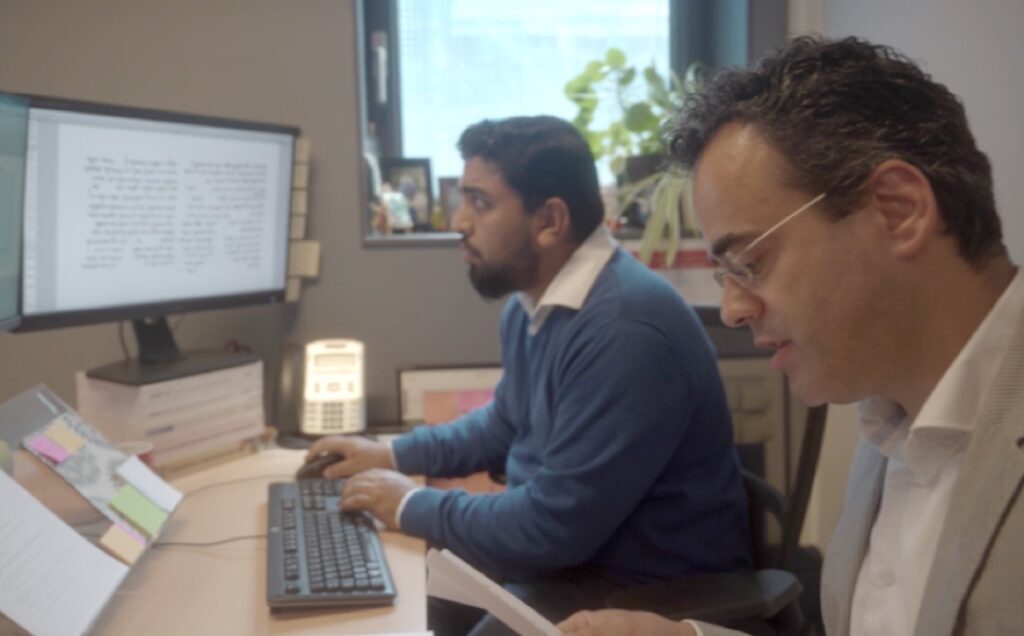Enter Enoch
The authors of this latest paper wanted to find a better means than paleography alone for determining the chronology of the scrolls, with an eye toward reconstructing the evolution of ideas. They thought that given the small data set in the case of the scrolls, it was wisest not to rely on a pre-trained model and instead “let the available data speak.”
University of Groningen/CC BY-SA

University of Groningen/CC BY-SA
The development of Enoch grew out of the team’s earlier deep neural network for ferreting out handwritten ink-trace patterns in digitized manuscripts, involving micro-level geometric shape analysis. “Enoch emphasizes shared characteristics and similarity matching between trained and test manuscripts, where traditional paleography focuses on subtle differences that are assumed to be indicative for style development,” the authors wrote. “Combining dissimilarity matching and adaptive reinforcement learning can uncover hidden patterns.”
They tested Enoch by having paleographic experts evaluate the AI program’s age estimate for several scrolls. The results: About 79 percent of Enoch’s estimates were deemed “realistic,” while its age estimates for the remaining 21 percent were either too young, too old, or just indecisive.
This new model revealed that many of the Dead Sea Scrolls are older than previous estimates based solely on paleography. That should be relevant for the question of when two ancient Jewish script styles—”Hasmonean” and “Herodian”—developed, for example. The former script was thought to have emerged between 150–50 BCE, but the authors believe Hasmonean could have emerged much earlier; ditto for the Herodian script. So both scripts may have coexisted since the late second century, challenging the prevailing view that they preexisted by the mid-first century BCE.
Enoch may even be able to shed light on biblical authorship. For instance, the authors concluded that two of the scrolls are the first known fragments of the Book of Daniel, believed to have been finished by an anonymous author around 160 BCE. And Ecclesiastes was likely completed by an anonymous author in the third century BCE, rather than by King Solomon in the 10th century BCE.
“With the Enoch tool we have opened a new door into the ancient world, like a time machine, that allows us to study the hands that wrote the Bible, especially now that we have established, for the first time, that two biblical scroll fragments come from the time of their presumed authors,” the authors wrote. “It is very exciting to set a significant step into solving the dating problem of the Dead Sea Scrolls and also creating a new tool that could be used to study other partially dated manuscript collections from history.”
PLoS ONE, 2025. DOI: 10.1371/journal.pone.0323185 (About DOIs).


